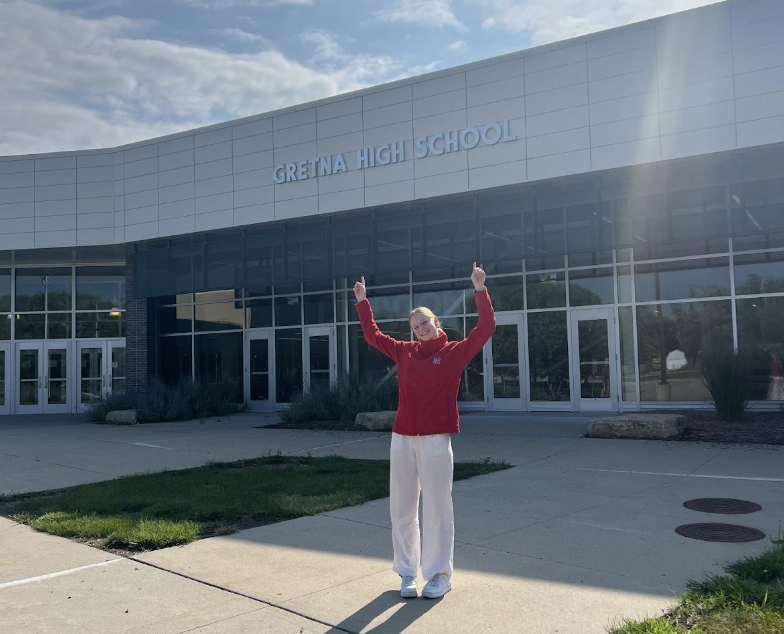416. That is how many school shootings and altercations have happened since the Columbine High School tragedy in 1999 that left 15 students and teachers dead. These atrocities have only resulted in what seems to be a jump backward in time. Many safety procedures have not changed and only promote fear and anxiety amongst the students who have to hear about these stories almost every other week.
I should have been scared about my dual credit classes or trying new extracurriculars when entering high school for my junior year. Instead, the only thing that has been on my mind was if I would be able to tell my mom goodbye if a shooting in the building ever happened. Which begs the question, why are we prioritizing the past over the futures of so many children? During our lockdown procedures, we are directed to sit in a corner in complete darkness and silence for however long it takes. In the case of the Robb Elementary shooting in Uvalde, Texas, it took an hour and thirty-eight minutes before the police intervened.
The Department of Homeland Security released a study in 2017 that showed most school shootings last about 12.5 minutes, yet the average response time for law enforcement is 18 minutes. What can you do to protect yourself from danger in those 12 minutes? Smearing yourself in the blood of your classmates could be your only hope, at least that was the reality of 11-year-old Miah Cerrillo who was at Robb Elementary. This school – like thousands if not tens of thousands of schools across the county – preaches a safe and clean environment for students to learn in, but what is safe about walking into a school in America today? At GHS, Deputy Schickert is great, but he’s only one man. An increase in security–like possibly adding metal detectors–may cause anxiety and stress among students. Still, at a national level, politicians and experts have already presented hundreds of times that our society could not care less. We can lock the doors and shut the blinds, yet turning off the lights does not make the danger less present.
What can be done about this issue that plagues the United States? You’ll get a lot of different answers from a variety of communities. Some of the biggest arguments are about the need for gun control or that the mental health crisis only gets worse by the day. While both are valid and do need a call for action, I think we have to make an effort to take threats and suspicious behaviors from students seriously and take action before it is too late.
Body cam footage from 2023 shows an interrogation with the student who would go on to be the recent shooter at Apalachee High School. A year ago, he was questioned for threats he allegedly made about shooting up his middle school. On Sept. 4, 2024, the same day as the Apalachee shooting, that student sent a message to his mother which prompted her to call the school. “I told them it was an extreme emergency and for them to go immediately and find my son to check on him,” his mother said to law enforcement. Both of these incidents with this one teen were extreme pieces of evidence proving that something could have been seriously wrong with his mental state. Clearly, not enough was done.
This brings me back to the arguments about more support for the mental health crisis. The Apalachee shooter had allegedly been asking for mental help via therapy and his aunt had managed to help him from afar. She stated to The Washington Post, “The adults around him failed him.” The teen had started therapy a week before the shooting. Stigmatized mental illnesses like schizophrenia and other psychotic disorders have been a factor in less than 5% of mass shootings. However, according to the National Library of Medicine, reports show that 60% of mass shooters since 1970 displayed symptoms of paranoia, delusions and severe depression before committing their crimes.
In my opinion, the lockdown cell phone policy at GHS needs to be changed to help students more in a crisis. Currently, we are given a short amount of time to alert parents of our situation before our phones are taken away. This is extremely distressing and being in contact with the outside world is necessary to reduce panic. Students need that connection to a parent during a crisis. It is argued that calls and texts would jam cell towers or the phones would give off too much light, but both of these are just incorrect. Phone brightness can be turned down to the bare minimum and most students use their cell phones at the same time every day during passing periods.
It’s not like this is an isolated incident in an isolated part of the United States; it’s happening in our state too. In 2011, Millard South was attacked by a senior student who ended the life of Vice Principal Vicki Kaspar and wounded Principal Dr. Curtis Case. Most recently, a fight broke out between two freshmen at Omaha Northwest High School, resulting in a 14-year-old pulling out a gun and critically injuring a 15-year-old boy. According to the alleged shooter’s mother, he was being bullied to the point of receiving a pass from the administrators to leave school five minutes early for his safety. He is currently being charged as an adult.
The United States school systems should be putting most of their resources into protecting students and making sure they get the best possible education, not focusing on phones being a distraction. It is impossible to move forward as a society if we focus on the past over our future.









